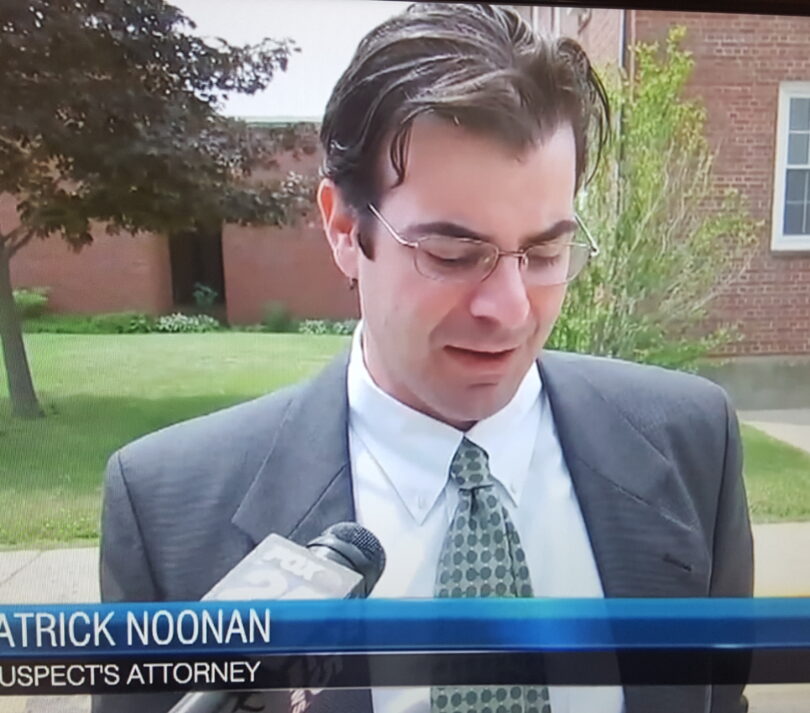Approximately half of all prescriptions errors resulting in death involve insulin.
According to a 2017 report by The Center for Disease Control over 100 million people in the United States are living with diabetes or prediabetes. Additionally, 30 million U.S. residents have type 2 diabetes, and approximately 200,000 have type 1 diabetes, for which insulin is the primary treatment. Insulin has been used to treat diabetes since 1922 and is a common medication in the United States so you might not think many prescription errors occur; however, they do, and insulin errors can quickly result in death.
Improper insulin use can cause a variety of conditions including hypoglycemia (low blood glucose levels), seizures, comas, kidney failure, and death. In fact, nearly half of the 300 deaths that result every year because of a medication error involve insulin.
The Dangerous Consequences of Insulin Overdose
The following are the two most common results of insulin overdoses:
Hypoglycemia – When too much insulin is injected into the body it causes the cells in the body to adsorb too much sugar (glucose) in the blood. Too much insulin can also force the liver to release less glucose, which can also contribute to hypoglycemia. Hypoglycemia results when your blood glucose levels are too low.
Less severe episodes of hypoglycemia can cause rapid heart rate, sweating, confusion, and weakness.
Repeated episodes cause cause kidney or neurological damage and reduce a persons’ “hypoglycemia awareness” which is the ability to feel that blood sugars are dropping before they become dangerously low.
Diabetic Seizure or Coma resulting in Death – The most serious cases of hypoglycemia can produce what is known as insulin shock or diabetic shock. This can result in seizures, comas, and death.
If a person has become unconscious due to low blood sugar, the hormone glucagon must be administered immediately to avoid coma and death. Glucagon forces the liver to release glucose back into the blood stream and should only be used in insulin shock emergencies.
Causes of Insulin Overdose (Apidra, Humulin, Lantus, Novolin, etc)
Pharmacy negligence is a common cause of insulin overdose deaths. A common pharmacy medication error happens when pharmacists and pharmacy technicians confuse two drugs that either sound similar or are spelled similar. This type of pharmacy negligence is very common with insulin.
The following is a list of insulin drugs that sound similar and are spelled similarly:
- Humalog and Humalog 75/25
- Humalog and Humulin Regular
- Humulin Regular and Humulin NPH
- Humalog 75/25 and Humulin 70/30
- Novolog and Humalog
- Novolog 70/30 and Novolin 70/30 and Humulin 70/30
- Novolin Regular and Novolin NPH
Most doctors write prescriptions on a paper prescription pad. Doctor’s can write prescriptions that are hard for pharmacists to read if the prescribing doctor is in a rush or has poor penmanship. For example, sloppy writing could lead a pharmacist to dispense Novolog instead of Novolin. While both drugs are insulins, they do not work the same way and when you take them matters.
As you can see in the insulin activity and duration chart below, insulin is made in different strengths, and for different purposes. For example, Novolin regular typical begins working 30-60 minutes after administration and continues to lower blood glucose for the next 6-10 hours, peaking around the 2-4 hour mark. Taking Novolin regular too soon or too long after meals could cause a patient’s blood glucose levels to drop too low.
Novolin NPH which is intended as a longer-acting intermediate insulin and not for meals, begins to work in 2-4 hours and lasts for up to 18 hours. Mistaking NPH for regular insulin could result in elevated blood sugars, followed by the possibility of severe low blood sugar is mistakenly used instead of “regular” insulin.
The “insulin peak” is the point at which the dose is working at its maximum, and the “duration” is how long the blood-glucose-lowering effect of the injection will last. The following is a list of insulin types available in the United States, along with how soon they start working, their peak, and how long they last. Talk to your healthcare provider about your insulin regimen.
Chart Comparison: Insulin Activity and Peak
| Insulin Type | Onset of Action (when it starts to lower blood glucose) |
Peak (working at its maximum) |
Duration of Action (how long it can lower blood glucose) |
| Lispro U-100 (Humalog) | Approximately 15 minutes | 1-2 hours | 3-6 hours |
| Lispro U-200 (Humalog 200) | Approximately 15 minutes | 1-2 hours | 3-6 hours |
| Aspart (Novolog) | Approximately 15 minutes | 1-2 hours | 3-6 hours |
| Glulisine (Apidra) | Approximately 20 minutes | 1-2 hours | 3-6 hours |
| Regular U-100 (Novolin R, Humulin R) | 30-60 minutes | 2-4 hours | 6-10 hours |
| Humulin R Regular U-500 | 30-60 minutes | 2-4 hours | Up to 24 hours |
| NPH (Novolin N, Humulin N, ReliOn) | 2-4 hours | 4-8 hours | 10-18 hours |
| Glargine U-100 (Lantus) | 1-2 hours | Minimal | Up to 24 hours |
| Glargine U-100 (Basaglar) | 1-2 hours | Minimal | Up to 24 hours |
| Glargine U-300 (Toujeo) | 6 hours | No significant peak | 24-36 hours |
| Detemir (Levemir) | 1-2 hours | Minimal** | Up to 24 hours** |
| Degludec U-100 & U-200 (Tresiba) | 1-4 hours | No significant peak | About 42 hours |
| Afrezza | < 15 minutes | Approx. 50 minutes | 2-3 hours |
Source: dLife
Other Common Insulin Prescription Errors
Pharmacists can also confuse insulin drugs with similar sounding non-insulin drugs like where a doctor wrote a prescription for the insulin drug Levemir but the pharmacist mistakenly dispensed Lovonox which is an anticoagulant used to treat blood clots. A mistake like this could kill a person with diabetes.
Another common pharmacy error involves occurs when the prescribing doctor writes an abbreviation for units “u” on the prescription and the pharmacist mistakes the abbreviation for an 0 or 4. Doctors are not supposed to abbreviate the units when filling out prescriptions. However, the use of abbreviations in medical records is widespread and this habit can carry over to prescriptions. It is the responsibility of the pharmacists to contact the prescribing doctor to confirm what drug and amount was actually prescribed.
Another cause of insulin overdose deaths involves healthcare workers giving one patient another patient’s insulin. This is very common in large healthcare settings like nursing homes or hospitals that have many patients.
Insulin Prescription Medication Error Medical Malpractice Attorneys
Initial Consultations Are Always Free – No Fee Unless We Recover For You
If you or a loved one experienced a medication injury or prescription overdose injury due to pharmacy negligence call our attorneys today to schedule a free consultation to find out if you are entitled to compensation. Our personal injury accident lawyers have years of experience bringing medical malpractice claims on behalf of clients that were injured due to no fault of their own. It is important to keep all prescription bottles, pills, store receipts, and pharmacy paperwork following a medication injury. We will need this information to build a case against the pharmacy and get you fair compensation for your medical bills, lost wages and pain and suffering.
No matter where you are located, we are just a phone call away. Call our law offices today to schedule a free no-obligation case review and consultation at (508) 588-0422 or click the link below to use our Free Case Evaluation Form.
We offer a free, no-obligation legal consultation to help you understand your rights and the value of your case.
Insulin Prescription Medication Errors Medical Malpractice and Personal Injury Attorneys
Our knowledgeable and experienced Greater Boston accident claims and personal injury attorneys at The Law Offices of Gerald J. Noonan are available to assist clients throughout all of Southeast Massachusetts, including but not limited to Plymouth County including Brockton, Plymouth, Bridgewater, Marshfield, Hingham, Duxbury, Wareham, Abington, Rockland, Whitman, Hanson, Holbrook, Middleborough; Norfolk County including Quincy, Stoughton, Dedham, Weymouth, Braintree, Avon, Holbrook, Randolph, Canton, Sharon, Brookline, Franklin; Bristol County including New Bedford, Fall River, Taunton, Attleboro, Mansfield, Westport, Dartmouth, Easton, Raynham, Lakeville, Norton; Cape Cod, Hyannis, Falmouth, Barnstable and the Greater Boston area including Cambridge, Somerville, Medford, Everett, Lawrence, Lynn, Revere, Dorchester, Roxbury.





